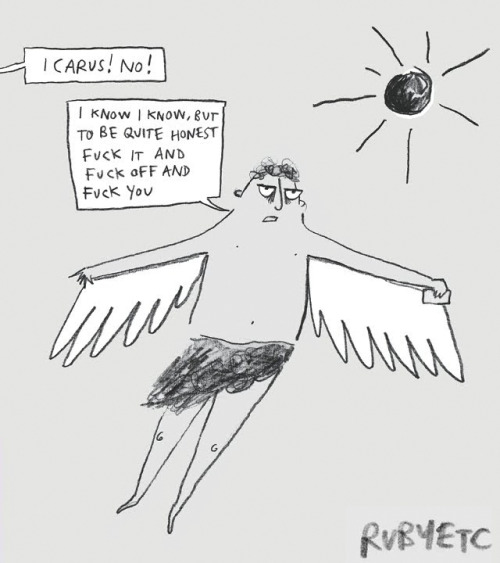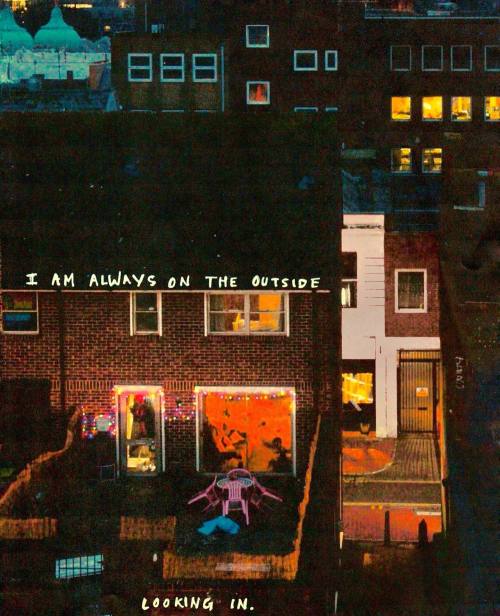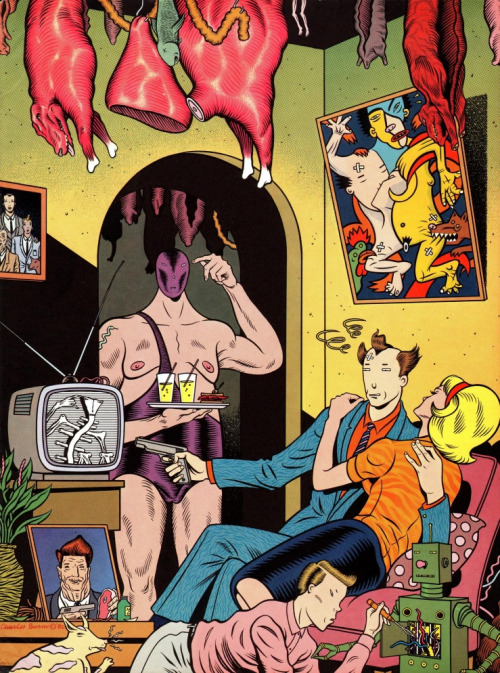Hi everyone! Hi! How are you!
You know what, I feel…alright this week! The sun is shining, the heating is on, the days are getting longer and I have done my tax return – it’s all going to be ok!
(On the subject of tax, by the way, a brief note on the Nadhim Zahawi thing – the funniest thing about all this, to my mind at least, is the fact that Zahawi has for the past 5-6 years or so been the biggest government lickspittle going. I am one of those tedious people who listens to the Today programme every morning, and as such I can say with reasonable confidence that there is noone who has done more of the 8:10am ‘meatshield to defend whatever awful sh1t the Tories have done now’ interviews than the self-described ‘King of An*l’ (thanks, Popbitch!) – on that basis, him STILL getting sacked as a result of his dodgy tax affairs, despite having spent much of the past decade orally bum-spelunking a succession of Prime Ministers, is even funnier (til you remember that he’s still a multi-millionaire and I am going to have to turn the heating off again shortly if I want to be able to buy new pants at any point in 2023).
Anyway. It’s lovely to see you all. Thanks for being here.
I am still Matt, this is still Web Curios, and I am, on reflection, quite proud of ‘orally bum-spelunking’ as a turn of phrase.

WE BEGIN THIS WEEK WITH A BRAND NEW MIX OF TWOSTEP AND NUKG BY OPPIDAN!
THE SECTION WHICH WOULD LIKE TO INTRODUCE YOU TO GABBER MARGINALIA, PT.1:
- Edit Existing Images With AI: I promise, this edition of Curios will be significantly less full of experimental AI gubbins than the previous few (whether this does anything to improve your enjoyment of the whole is, on balance, unlikely, but know that I am at least trying), but there are still one or two things to get out of the way so, er, let’s get on with it. First up is the new, exciting update to a bunch of text-to-image platforms which now let you upload an image and then textually specify the edits you would like the machine to make to said image. “Hide a red-striped-besweatered glasses-wearing homunculus somewhere in this picture”, for example, or “make it a dog”, or “put Rishi Sunak into a bombed-out post-apocalyptic landscape”, that sort of thing. As with a lot of current AI stuff, this doesn’t (in my experience, at least) quite work well enough to be a standalone solution to anything just yet, but it’s quick-and-dirty enough to be useful for some quick potatoshop lols while we wait ~6months for it to render your Junior Graphic Designer obsolete (by the way, the link here goes to an AI image generation platform called Playground AI, but this tech is now A Thing and should be available on whatever your particular text-to-image platform of choice is).
- Drayk It: See, now THIS is more like it – if I’m going to have to feature AI stuff to ‘keep up with the zeitgeist’ (must I? Can the zeitgeist not just sort of fcuk off?) then I would rather it were utterly pointless and very silly projects like this one, which lets you give it any subject matter you require and click a button, at which point some gears will whirr and you will, in a few short seconds, be presented with audio of a rap performed by an AI version of Drake, all about whatever you chose. On one the hand, the model here isn’t the greatest rapper or rhymer in the world and will occasionally get stuck in weird little loops; on the other, I can’t pretend I didn’t find AI Drake croonining to me about (and this was my exact prompt) “premature ejaculation is actually a sexual superpower that women really love” at least a little bit wonderful. Please feel free to share any particularly successful compositions with me – at the very least I’d hope that some of you will be using this tech to come up with inspiring new corporate anthems with which to soundtrack Friday drinks (for the three of you who still bother going into the office).
- Google Is Working On Text To Music: You can’t yet play around with it yet because of Google’s BORING insistence that it doesn’t want to put this stuff out into the wild without more guardrails and more testing, but this webpage contains a bunch of frankly astonishing examples of software that lets you type in stuff like ‘imagine if Lou Bega worked with Chesney Hawkes to somehow compose a banger which took the main stylistic elements of their two most famous hits but which also then channeled the particular melodic flair of The Chainsmokers’ and then generates quite astonishingly competent music from your text. Seriously, it’s worth checking out a few of these because they really are VERY good indeed.
- Another Massive List of AI Tools: I’m not going to include any more of these after this point because, frankly, life’s too short, but I am giving you ONE LAST OPPORTUNITY to bookmark one of them because they are SO useful. The main one linked here is probably the most comprehensive I’ve yet seen, but you might want to also make a note of this one and this one on the offchance that any of them die or stop getting updated.
- Vermeer: I’ve said this several times over the years (to the point where I think the digital director of the institution occasionally reads this – HELLO, DIGITAL DIRECTOR!), but Amsterdam’s Rijksmuseum really does put out some wonderful digital work to promote its exhibitions. This website, created to mark the opening of a new retrospective on the life and work of Johannes Vermeer, is no exception – it’s SO NICE, for a start, to see a digital project from a gallery or museum be well-funded enough that they are able to commission Stephen fcuking Fry to do all the voicework. Closer to Vermeer (for that is the title of this DIGITAL EXPERIENCE) is an opportunity to explore the painter’s oeuvre, either as a series of guided digital tours accompanied by the dulcet tones of the aforementioned Fry, or independently using a really smart and nicely-taxonomised interface which allows you to assemble your own collections of works from the collection based on elements or historical connections which interest you, and which does that wonderful thing that some of the best digital curation achieves whereby each visitor really can create their own path through the artist’s works and life by focusing on specific elements of each canvas and being able to quickly and effectively contrast the treatment of said element across multiple works. Aside from anything else, the quality of the digitisation of the paintings here really is superb – honestly, this is sort of the gold standard for digital museum projects and, even better, the total number of mentions of the word ‘metaverse’ is zero, and at no point will you be asked to navigate a poorly-rendered 3d avatar model through a clunkily-rendered gallery space for which THANK FCUK.
- One Second Sampler: This is very silly, but, equally, the sort of thing which you could use to drive someone to the very edge of madness and so it gets the nod for Curios. One Second Sampler is exactly that – hit the button and the site will record one second of audio from your mic, which you can then play at a variety of different pitches using your keyboard. That might not sound like much, but if you can’t immediately see the low-key bullying potential in secretly recording a friend, colleague, family member or loved one and then using that pitch-shifted recorded sound sting as a tool to mock and frustrate then, well, you disappoint me, frankly.
- The Tech Layoffs Tracker: It’s fair to say that, from what I can tell, the employment market doesn’t look…fantastic at the moment (the cynic in me wonders to what extent this is a deliberate choice by big business to reintroduce a little more of an employers’ edge after a couple of years in which the prevailing wisdom has been that power had been shifting (minimally, but still) towards workers instead of bosses, but maybe those are simply the ramblings of a pinko loon), as evidenced by this ongoing tracker of the layoffs recently announced across the tech industry. This is posted not to gloat or laugh – I mean, seriously, what sort of a cnut do you think I am? – but instead because it’s possible that someone might find it useful; aside from anything else, should you be in the business of recruiting people for developer/code-y roles, this is probably a decent place to start looking (there’s a tab on the website collecting spreadsheets of staff who’ve been canned so other employers can theoretically offer them roles, for example).
- The Laid Off Club: Perhaps in reaction to the last link, this little website is a place where people who have lost their jobs can post about their feelings, and where others can respond with messages or support – this is both really rather cute, and also an interesting way of designing the post/comment interface (I know that sounds dull, but I promise you you’ll see what I mean if you click the link).
- Slay: We’re still waiting for the first ‘new app of the year which will become popular with kids and which will as a result become the subject of increasingly insane valuations despite having literally no obvious path to monetisation that wouldn’t kill the very things that made it popular in the first place’, but it seems that there might be an early contender in Slay, which I’ve seen being talked up in a few places and which is apparently Very Downloaded in the early days of 2023. The gimmick here is basically the same sort of thing as YikYak et al – asking questions anonymously of your peergroup for associated social clout! – except the gimmick here is the whole ‘safety and positivity’ vibe, whereby the questions users are allowed to ask are solely positive ones (“Who has the kindest heart?”; “Who makes me smile whenever I think of them?”; “Who seems least likely to end their lives in the gutter of drink and drug abuse?”, that sort of thing), and the only possible feedback is to vote for one of four people – no messages, no DMs, no additional comments. Which, honestly, sounds a) incredibly fcuking dull (but I appreciate I am not a 13 year old girl, and so possibly am not at the heart of the target demographic here) and b) like it could absolutely still get used for bullying in a few creative ways, but also, and perhaps most crucially c) sounds literally impossible to monetise without ruining the already-wafer-thin user experience. Anyway, it’s immaterial because the featureset here will get nicked by one of the big players within six months and this will become yet another memory consigned to the oubliette of previously buzzy apps that noone remembers anymore (I REMEMBER YOU, PEACH!).
- The GenZ Translator: This is a very silly little GPT-enabled hacksite which takes any text you feed it and translates it into GenZ speak. In fairness, it sort-of does exactly what it promises, albeit not particularly spectacularly, and I think you could have a lot of fun with this if you’re bored of an afternoon. Why not translate all of your employer’s website and see if anyone notices? Why not use it to YOOF UP your content calendar for that FS brand that’s desperate to engage a younger consumer base? Why not save the link on your phone and use it next time you’re speaking with an ACTUAL YOUNG PERSON in order to make them feel embarrassed and uncomfortable about how badly you’re trying to integrate with them? Come on FFS, this is all GREAT material which will make those empty hours just fly by.
- Film Twitter Take Generator: I like this link because it’s pleasingly old-school – no AI rubbish here, just a database full of filmic content somewhere in the back end and a button to press – and also because the stuff it generates is, I think, genuinely quite good – “If you think Halloween (1978) is unproblematic you need to TOUCH GRASS”, for example, or “People watching V for Vendetta and not realizing you’re NOT supposed to identify with the protagonist LOL” feel like exactly the sort of mildly-irritating tossed-off opinions that will keep film buffs shouting at each other online for hours. If nothing else, you can probably get some low-level troll mileage out of logging into your favourite film-lovers forum and dropping some of these for the lols.
- FigCat: Earlier this week I received an email from a nice person named Jan, who wanted to know whether something they had made was suitable for inclusion in Curios (they expressed some uncertainty as to whether the links were ‘on-brand’ for Curios, but went on to explain that in their defence “it’s very difficult to tell what the brand is, exactly”, which I obviously took as testament to the GREAT WORK I have been doing here. “I recently started a website, where I post very long thematic lists of things (currently books, comics, and RPG supplements), ranked by their popularity online. The interesting part is that I compile these lists manually by visiting hundreds of web addresses (blog posts, threads on Reddit etc.) and patiently tallying the number of recommendations the various items receive there. The web is full of lists of useless stuff, but to my best knowledge very few others are assembled in the manner of a medieval Benedictine monk with alarming obsessive tendencies.” This is QUITE THE UNDERTAKING – it’s relatively early days, and I get the feeling Jan is just getting started here, but if you want a bunch of lists of, say, RPGs with multiversal elements, or European novels from 1940 to the present day, then BOY does this site have you covered. I am slightly in awe of this, and I do rather like the wider ambition of creating a universal directory of online recommendations, however Sisyphean and impossible such a thing might be.
- Wargal Art: Jan was also kind enough to point me at his website collecting AI art – now I wasn’t that interested in this at the outset because, look, I have seen a LOT of AI-generated art over the past year or so and I am frankly a bit jaded by it as a topic and am running out of interest in the very recognisable style of most machine-made imagery, but I really rather liked this; Jan’s done a nice job of collecting ‘collections’ of pictures from a similar point in latent space, creating what feel like miniature exhibitions by a range of different artists and I find this sort of exploration of ‘areas’ of visual style a lot more interesting than the majority of Stable Diffusion work out there. Also, bonus points for the fact that literally NONE of this features anything resembling ‘fantasy art’ and the additional fact that there don’t appear to be any large-breasted anime ladies to be seen (I know it doesn’t seem like that ought to be praiseworthy but, again, trust me when I say I have seen a LOT of this stuff and the ‘no bosoms’ thing is depressingly rare.
- Oikioikiki: I have literally NO idea where I found this, but it is pleasing to me and it may well be pleasing to you too. I don’t know who the person who owns this Pinterest account is, but I am THRILLED that they take such pleasure and pride in photographing their stuffed toys with quite such care and attention. There are albums here featuring Snoopy and Woodstock, Gromit and that pink bear from Toy Story 3, all photographed out in the real world with love (and a degree of obsession – there are, er, over 500 photos of Snoopy and Woodstock, for example, which is…quite a lot), and, whilst I am ordinarily unmoved by this sort of whimsy, there’s something genuinely heartstring-tugging about the care with which Gromit in particular has been shot. I very much hope that this is going to be an ongoing thing, because, honestly, this is SO PURE.
- Mimetic Rocks: Rocks! That look like animals or people! That’s it! Click the image, get a new rock, enjoy it, move on! There’s an email address should you have any photographs of a metamorphic armadillo or something to submit to the project.
- Cursed Images: Is it me or is there something of an…old school feel to this week’s crop of links? This one, for example, feels like it’s straight out of 2013 – all this website does is present you with a new ‘cursed’ image each time you click, but that, frankly, is all you need. Much of the stuff on here will be recognisable to any veterans of the old, weird web (what do you mean “Matt, you have clearly spent far, far too much time online if you recognise even one of these fcuking pictures, what is wrong with you and what the fcuk have you been doing with your life?”), but there are enough new (to me at least) weird things sprinkled throughout to keep you clicking for a while. If nothing else, should you have any young people in your lives who are yet to experience the incredible power of context-free images from the weird past then WOW are they in for a treat with this (as an aside, is there a TikTok for this sort of stuff? It feels like there’s an interesting aesthetic in combining these things with the corecore stuff – and there it is, the first sentence I have typed in 2023 which has made me instinctively recoil in horror as soon as I read it back, HUZZAH!).
- No Context French: I can’t say this with any certainty, but I get the feeling that these sorts of ‘no context’ meme accounts are incredibly gauche and Facebook-y if you’re part of the country they are about (cf No Context Brits, which just feels ‘this was on TikTok a month ago’) but become brilliantly weird as soon as they are about a country you’re less familiar with. So it is with No Context French, my new favourite Twitter account because if nothing else it provides a regular reminder that the internet has rendered everyone’s brain stupid and broken, even Parisians (also, the footage from protests is a happy and convenient reminder that the French are simply better at industrial action than we are).
- The Minimalist Photography Awards 2022: I think I said about five years ago that we might be reaching saturation point with photography awards, and the subsequent five years have done nothing to disabuse me of that notion. Still, this is one contest I can very much get behind – The Minimalist Photo Awards “is a non profit association, powered by black & white Minimalism magazine, which aims to recognize, reward and expose talented photographers all around the world and introduce them to the professional photography industry”, and the work here is SO GOOD. If nothing else it’s refreshing because the style and subjects it promotes are so distinct from many of the other photo contests I feature in here – if you’re a designer or art director then there’s just as much to enjoy in here from a colour and composition point of view as there is if you’re a photographer. In case you care, I think this one is my favourite of the entries, but as ever I encourage you to have a good old explore as there is SO MUCH great work amongst the winners and commendees.
- The Wonders of Street View: Prolific creator of ‘fun internet ephemera’ Neal Agarwal is BACK with a new game/toy thing – The Wonders of Street View is a BRILLIANT timesink which does one thing and one thing only, taking you through a wonderful selection of odd views on Google Streetview. What’s particularly nice about this is that StreetView embeds in the site, meaning not only can you see some weird stuff but you can also, should you desire, explore the surrounding area to get context for the weirdness (I just had a wonder around the Mustard Museum in Maine and feel much better for it, for example).

THE SECTION WHICH WOULD LIKE TO INTRODUCE YOU TO GABBER MARGINALIA, PT.2:
- The Top Escape Rooms Project: I appreciate that Escape Rooms are perhaps a bit 2012, a bit ‘hipsters are still a thing’, a bit ‘craft beer’ – but, equally, they can be fun if done well and in the right company, and, look, it’s not like things have improved immeasurably since their heyday so perhaps just GIVE THEM A CHANCE OK? Ahem. Anyway, I was until this week unaware of the fact that there exists an international organisation dedicated not only to celebrating escape rooms but also to ranking them, and that each year they compile a list of what they consider to be the BEST experiences in the world – but there does, and they do, and here it is. “The Top Escape Rooms Project is an attempt to find the very best escape rooms in the world by leveraging the experience of the most experienced escape room enthusiasts in the world. We serve escape room owners and designers by publicly recognizing their achievements, and we serve our fellow enthusiasts by providing an international bucket list of the best rooms to play.” There are only two UK-based room in this year’s selection of the best 100 (Macclesfield and Margate, in case you were interested), which is a shame, but there are LOADS around Europe – if you’re that way inclined, you could make this the basis of a frankly brilliant series of weekend breaks to some excellent destinations.
- Lileks: It was slightly odd discovering this site – it felt hugely familiar, but I think that that’s because it’s had a few VIRAL HITS over the years and as such I recognise some of the content (specifically, I think this was the host of one of the original ‘man, food in 1970s America really was quite spectacularly vile, wasn’t it?’ recipe card roundup posts) – but also like I had found some sort of spiritual kin in some small way. THIS HAS BEEN GOING FOR 26 YEARS FFS!!! There’s a sort of general lean towards ‘slightly weird US ephemera from the 50s-70s’, but it’s probably best to let the site’s owner introduce it: “What is this thing? Simple: The anteroom of the internet’s most diverse, idiosyncratic, and individually curated pop-culture museum. Note: that’s the last time I’ll use “curated.” It’s pretentious. But it’s true! I am pretentious. Also, this site is a one-man effort, assembled over two decades, its innumerable sub-sites gathered together under general, vague rubrics.It’s not some idle project, occasionally updated. The Bleat, a blog that’s celebrating its 25th year, contains a M-F essay, some piece of old commercial ephemera, a rotating feature on everything from cliffhanger serials to old radio to main street America to the ads of the 1930s or 1970s, and a link to the daily site update. And that’s just the blog. Scroll down for the total enormity. I hope you enjoy the site. Twenty-six years, and counting.” I cannot stress enough how much I love this – a proper, sprawling, 2.5-decade-long accretion of links and words and pictures, all mapping a vague sense of ‘what one person has found interesting enough to share online since 1997’ – but if you’re after a way in, why not try this wonderful series of posts analysing the particular art style of one Art Frahm, an artist whose work seemingly consisted solely of cheesecake postcard illustrations of 1950s women whose pants have inexplicably just fallen around their ankles (no, really).
- Ivory for Mastodon: Are any of you actually using Mastodon? How’s it working out for you? I tried, honestly I did, but all the reasons it didn’t stick for me in 2017 or whenever are still very much true, and now there’s this added barrier of my being old and tired and jaded and increasingly of the opinion that when Twitter finally dies I think I will probably just not do social networks anymore (I reserve the right to completely change my mind on this should something infinitely new and shiny and exciting and (please god, please god) solely text-based take off in the next year or so, obvs). Still, if you’re finding that Mastodon is scratching your Elon-free Twitter itch then you may enjoy this app – an (iOS-only at the moment, I think) mobile app for it, called Ivory, which I have been informed by a bunch of people whose opinions I tend to broadly trust is Very Good as far as these things go. Obviously I haven’t tried it myself re a) Mastodon; and b) Apple, but, with the usual caveats, this may well be worth a look.
- How Far Does 5kg of CO2 Get You?: This is an interesting little data experiment which asks ‘if you limited yourself to only emitting 5kg of CO2, how far could you travel in a variety of different European countries?’ (and yes, fine, I appreciate that that is a potentially niche definition of the term ‘interesting’, but I AM INTERESTED OK? ffs). Distances vary from country to country for various reasons: “an electric train in Sweden can travel further than an electric bike, due to the greater carbon footprint per individuals of manufacturing the bike and the very low footprint of traveling by train almost exclusively powered by renewables. In Poland and Cyprus, carbon intensity is so high that driving a diesel car may be less detrimental than driving an electric car. From Paris, France, driving a SUV you can barely get out of town (21 km) whereas a small electric car would drive you 3 times further to the beautiful wine cellars of Bourgogne (77km).” It feels like there’s something in this – a travel calculator for low-carbon weekends, for example, that spits out suggestions and travel plans and booking assistance, all-in-one, for example (but you will DEFINITELY come up with better ones – or at least I hope you do, because that was frankly sh1t and I like to think that you’re all significantly less useless than I am).
- Kutt: You know how everyone makes bets, right? I mean just small ones, between friends, in a fun, ‘no money involved’, non-binding, bragging rights sort of way, the sort of throwaway remark in the pub which you laugh about and then which, in the main, everyone forgets or which, at most, involves someone having to shave an eyebrow or perform some sort of worryingly-biological forfeit should they lose. Well imagine THAT, but instead of everything being for fun and for lols you instead plug the bet into an app and pledge ACTUAL MONEY which will get automatically transferred to the winner upon said bet’s completion – doesn’t that sound better? Well, er, no, actually it doesn’t, it sounds like it could lead to all sorts of issues – but that’s not stopping new startup Kutt, which confidently claims to be a “sports and social gaming platform that allows friends and strangers to use their knowledge of sports, politics, and pop culture to compete against each other in a variety of competitions.” Set your own odds! Ensure people pay up! BET UNLIMITED AMOUNTS! There is literally no way at all that this app could possibly be a bad and ruinous idea, oh no sirree – any journalists out there looking for a nice, easy new tech-led scare story really could do worse than apply a bit of scrutiny to this, because it looks…dangerous. An app which is promising to let anyone run a book on anything, that they can offer to anyone, with no loss limit? HMMM.
- Protected Planet: “Protected Planet is the authoritative source of data on protected areas and other effective area-based conservation measures (OECMs). It exists due to the extensive efforts of governments and other stakeholders to map, monitor and report data on protected areas and OECMs. Through the Protected Planet website, users can explore the World Database on Protected Areas (WDPA), World Database on OECMs, Global Database on Protected Area Management Effectiveness (GD-PAME), and a wealth of associated information. Protected Planet enables a spectrum of users to access data for information-based decision making, policy development, and business and conservation planning. Businesses in a range of sectors including mining, oil and gas, and finance use the WDPA and associated databases to identify the biodiversity risks and opportunities of a given project.” Whilst this is primarily of use and interest to people working in conservation (or, alternatively, in industries which are very much the opposite of conservation but which need to pay attention to it), it’s also just generally fascinating to browse around the world and see where the largest concentration of protected areas is – who knew Estonia was such a hotbed of natural conservation? EVERYONE TO TALLINN!
- Study Hall: This is an interesting idea, and something that feels very much like ‘the shape of things to come’. YouTube recently launched this new educational initiative which, in partnership with Arizona State University, will make actual proper college (University)-level courses available on the platform, courses which will be valid for actual, proper college (university) credits. There’s a fee, but it is SMALL compared to what you would pay through other institutions, and it’s hard to see this as anything other than A Good Thing, democratising access to education and creating a genuinely new path into the college (University) system for people who might otherwise have struggled to access it. It’s interesting that online education hasn’t really progressed that much since the early boom days of the Khan Academy and other such early-web-2 poster children, but perhaps this integration of online resources and the creation of truly transferable remote syllabi will accelerate change from hereon in.
- Anne of Green Gables: I can’t pretend that Anne of Green Gables ever meant anything to me growing up, but I’m aware that for some of you it was probably a SEMINAL CHILDHOOD TEXT and the mere mention of its title unlocks some sort of Proustian memorytrain within you. It is for YOU, then (yes YOU), that I present this website which offers a properly-deep exploration of the original manuscript drafted by LM Montgomery with notes and annotations and explanations – there’s something lovely about the fact that the site allows you to read the whole book should you so choose, presenting the digitised manuscript pages alongside the more readable text (the digitisation also let you explore old photographs and features all sorts of pleasing additional bits of information about the author, her family, the cultural milieu in which she was writing, etc), and, honestly, this is pretty much perfect as a way of presenting a manuscript imho.
- Roast Dating: I remain staggered that there hasn’t been more made of the way AI (specifically text AI) is going to mess with dating – or, frankly, that I haven’t found more services springing up that offer to let the machine Cyrano your way into someone’s pants (again, journalists, this one is a total open goal for mid-markets and right-wing broadsheets). Still, here’s one! Roast is a FULL SUITE of AI tools which promises to punch up your profile pics and improve your pulling power, based on what the company claims is analysis of THOUSANDS of dating profiles to determine how best to be successful on the apps (the answer, I think, as has been repeatedly proven, is to be very, very good-looking) – whilst I firmly believe that this is total and utter post-PUA bullsh1t, I will (quietly, reluctantly) applaud the way they are positioning this as ‘using science and data to improve your chances’ rather than ‘just outsource the emotional labour of attempting to get to know another human being to determine whether or not you might be emotionally compatible to a machine’, which, to be clear, is exactly what this is. If Tinder, Hinge, Bumble and the rest aren’t already working on in-app tools to detect AI-generated copy in messages then I would be amazed.
- Plastic Free: I go slightly annoyed by the copy on this site, which seems to be doing its best to obscure what the actual fcuk this is meant to be. “We are an army of experts — material scientists, system changers, innovators, impact measurers, creators, builders, artisans — united in a shared mission to ignite and inspire the world to turn off the plastic tap.” WELL BULLY FOR YOU. This is particularly irritating, because what this ACTUALLY seems to be is in fact quite useful – basically this site aggregates all sorts of news and science updates about ways in which designers and manufacturers and makers around the world are creating things in less-plastic-reliant ways. So, for example, you can find information on new materials being developed to create soles for shoes without plastics, or new grasses being engineered which it is hoped will be able to replace nylons in time – it’s all very much on the consumer-y end of things, and if I’m being cynical it strikes me that this is basically a one-stop-shop for the next time you need to spend six minutes filling in the ‘CSR Ideas’ portion of the pitch, but, equally, there’s loads of information in here which could be put to good use (although, admittedly, probably not by any of us advermarketingprcunts).
- SuperBad: Via the ever-charming Naive comes this entirely-baffling web project. I have no idea whatsoever is going on here, or what the point of it is (should there be one), or who made it, and I can’t categorically promise you that it doesn’t potentially lead somewhere terrible and wrong (but, er, it probably doesn’t) – SuperBad is…look, it’s an incomprehensible mess, frankly, of lo-fi webart and partial html and broken links and dead ends and non-sequiturs and it is BRILLIANT and baffling and utterly mystifying, and I spent a good 40 minutes clicking and playing and didn’t even come close to scrying what this was for or where the edge of it are, or whether it even HAS edges, and honestly this might be my favourite thing of the week.
- Time My Meeting: Would you like a handy tool with which to demonstrate exactly what a futile waste of time the vast majority of your work meetings are? YOU’RE WELCOME! Start the timer on this website when you’re meeting kicks off, stop it when it ends, and you’ll be able to tell people ‘well, that meeting was longer than the inaugural time taken to complete the marathon in the modern olympiad!’, and your colleagues will all hate you just that little bit more. Which is almost certainly what you were hoping to get out of Curios today, so, well, you’re welcome again!
- The Pr0nhub 2022 Year in Review: I have long contended that Pr0nhub’s annual data drop about the content consumption habits of visitors to its site is THE most interesting and revealing document published each year about Where We Are as a species (‘nowhere good’, is the generalised answer). I am a little late to this this time around, but I was glad to find that the drop doesn’t disappoint – you will of course fund your own nuggets of interesting in here, but, personally-speaking, I am most curious about the rise of ‘hentai’ as a popular category around the world (why are we increasingly masturbating to cartoons? WHAT DOES THIS SAY ABOUT US?), curious about the rise in popularity of trans-related content (this doesn’t strike me as a particularly positive thing when it comes to seeing trans people as people rather than sexual curios), and utterly baffled as to why so many people in Australia were searching for ‘two vagina sex’ (can any Australians explain this, please?). This is the Big Data we really deserve.
- This Is Not Word: Make beautiful patterns with words as you type. This is a small, frivolous toything, but I would really really like the ability to activate this mode in GDocs (should anyone from Google be reading this and feel like acceding to the unreasonable demands of some webmong).
- It’s Funny How The Knight Moves: This made me feel quite stupid quite quickly, but is equally the sort of thing that I imagine many of you (the ‘shape rotators’ amongst you, to exhume a now-already-antediluvian-feeling conversation from about a year ago) will find scratches a very particular brain-itch in quite a pleasing fashion. Can YOU make the knight touch every square on the board that doesn’t see it either put in check by the queen or taking the queen? Maybe you can, but fcuk me was it beyond my limited intellectual capabilities.
- UFO Clicker: A clicker game that only lasts about 15 minutes rather than taking over your life like some sort of low-level meth! This involves hoovering up tiny little humans with spaceships, and is very satisfying indeed should you be in the market for something to waste away the working day.
- Chronophoto: Ooh, this is fun and VERY addictive. You get shown a series of photos, and the game is to guess exactly when each was taken – this is great, and aside from anything else is a very good way of learning about subtle aesthetic differences between eras that are largely thought of as culturally/aesthetically homogenous (cf ‘the 90s’).
- Die In The Dungeon: Final link of the miscellanea this week and WOW is it a good one – Die In The Dungeon is the demo of a forthcoming full game, playable in-browser, in which you seek to get your little warrior frog creature through 25 levels of fighting monsters with dice. Which, fine, may not sound like fun, but I have played the SH1T out of this this week, in a way which I haven’t done with one of these since the Vampire Survivors demo a year or so back (and that ended up being one of the biggest games of 2022) and which possibly indicates that this one is a bit special. Give it a go, I promise it’s LOADS of fun (also, the frog is very cute) – drag the dice onto the grid to play, you’ll pick it up as you go along.

THE CIRCUS OF TUMBLRS!
- Immerseology: Look, I know this isn’t a Tumblr but frankly I continue to struggle to find anything to put in here but I am so pathetically change averse that even the thought of altering one of the sections of Curios after all these years brings me out in slight cold sweats. Anyway, tedious taxonomical questions that literally noone other than me cares about aside, this is a really interesting website which focuses on the practice of immersive theatre: “Immersology studies the emerging genre of immersive theatre from the creator’s point of view. It offers theories, structures, design struggles, practicals, and other meta-level musings.” Even if you don’t have anything to do with theatre (immersive or otherwise), I’d argue that this is an interesting and worthwhile place to explore – some of the stuff they write about experience design is, I think, applicable across a range of other disciplines and media.
THE TROUGH OF (INSTA) FEEDS!
- The Anonymous Photo Project: Found photos, basically – but good ones. “In 2017 when filmmaker lee shulman bought a random box of vintage slides he fell completely in love with the people and stories he discovered in these unique windows in to our past lives. Collecting and preserving unique colour slides from the last 70 years, the project was born out of a desire to preserve this collective memory and give a second life to the people often forgotten in these timeless moments captured in stunning kodachrome colour.” These are great, and you can find more (and more information) at this website.
LONG THINGS WHICH ARE LONG!
- Hyperconnected Culture and its Disconnects: It does very much feel that there’s a reckoning coming to the idea of The Creator Economy(™), one based on the fact that, in the main, it appears everyone has realised that many of the base-level assumptions underpinning it were, to put it politely, utter fcuking bullshit. This is a very good essay by Rogers Brubaker which examines some of the reasons why that might be the case, specifically looking at the degree to which both the production, consumption and circulation of content can be said to have been ‘democratised’ in any meaningful sense; Brubaker concludes that whilst production has been, circulation (the most crucial component of something achieving widespread resonance and relevance, and in allowing people to earn from their creation) has very much not, and that the disconnect between these two things has prevented the ‘creator economy’ from taking off in any meaningful way, and that algorithms are in a way set to exacerbate this state of affairs: “For most, the pleasures of digital cultural consumption are uncoupled from the exertions of curatorship. Today’s digital consumers are no longer being fed a limited diet of standardized cultural products, but they are still being fed. Consumption may be personalized, but it would be a stretch, in most cases, to call it self-directed — and it is not necessarily more active than pre-digital forms of “mass” cultural consumption. Even Yochai Benkler, an enthusiastic proponent of participatory digital culture, felt obliged to acknowledge the continued “prevalence of the culture of passive consumption.””.
- Seven Questions To Ask About AI: I know that Curios has been very AI-heavy of late (for which continued apologies), but it really is SO interesting to consider how these technologies might develop or be used in the short-to-medium term (the long-term is simply too wildly unpredictable to speculate upon imho). What I am finding particularly interesting is the (somewhat reassuring) extent to which none of the stuff I have seen over the past few months is QUITE up to the task of replacing people yet (leaving aside image generators and illustrators, which, fine, a BIT), and the degree to which society is embracing the centaur-like possibilities of the tech – but also the slight feeling that what we’re getting excited about now is the bullsh1t, idiot’s version of this and we’re a couple of iterations away from the REAL gamechangey stuff (fwiw I am increasingly coming around to this point of view). Anyway, this is a decent essay and set of questions/considerations by Max Read, which is very much worth reading if you want a set of lenses through which to consider the current AI hypewagon.
- Misinformation and the Web: This is aq conversation between Peter Kafka and Facebook’s former head of product security Alex Stamos, which ranges across a variety of topics but which is mostly concerned with asking the question ‘are we too worried about online misinformation and the impact it might have on society?’ – you may be unsurprised to learn that Stamos’ opinion is very much ‘yes, yes we are’. He makes some good points – on Trump, for example, he points out that the volume of content generated about the man during the 2015 election campaign and his tenure as President was such that any attempt at content-based manipulation via misinformation was doomed to failure simply by dint of being at most 0.001% of the conversation – but, equally, seems curiously blind on other issues (for example – even if that’s only 0.001%of the content, if you can make influential people see it and believe it and act on it, then it doesn’t really matter does it? And why is it preposterous, as Stamos seems to assert here, for private companies to seek to act in ways that are of broad benefit to humanity?), but in general this is an interesting discussion on a topic which continues to be of fairly massive significance.
- Why We’re Still Waiting for VR: This is VERY LONG, but if you’re interested in reading a reasonably clear-eyed analysis of why it is that we’re not yet all using VR headsets at home and at work, and why AR continues to be little more than a gimmick despite the fact that people have been trying to sell it to us as THE NEXT THING COMING RIGHT NOW HONEST GUV for literally 15 years now, all written by someone who would probably admit that they have been a reasonably big cheerleader on all this stuff for a while, then this piece by Matthew Ball (the VC guy who got famous by writing loads of (mostly quite smart if inevitably-hyperbolic) stuff about the metaverse) might be of interest. If nothing else, Ball does a really good job of explaining all the technical reasons why VR/AR/XR at scale is challenging – the whole question of ‘a near infinite number of variables when it comes to the user experience of AR based on device, location, time of day, etc’ is obvious when you think about it, for example, but had literally never occurred to me til I read this – and I thought his conclusions towards the end of the piece about what this could mean for the practical development of whatever the fcuk we mean today when we use the word ‘metaverse’ were interesting and novel.
- Working In VR: A nice companion piece to the previous article, this piece in Slate describes the current experience of actually trying to do your job in Horizon Workrooms and contains an unusually-honest appraisal of ‘what it actually is that the innovation labs of places like Accenture actually do’ which is, it turns out, ‘act as the sales arms for whatever new software or hardware tech is being peddled by the big boys as the MUST-HAVE transformative solution du jour, regardless of whether or not it actually makes sense for the client’. Anyway, you may not be surprised to learn that working in VR sounds absolutely fcuking awful in every way – if you see the consultants entering your building with headsets, RUN FOR THE HILLS.
- Ensh1ttification: You have probably seen this doing the rounds this week, if you’ve not read it already – Cory Doctorow writes on the ‘ensh1ttification’ of platforms in the modern internet era, and how it is happening to TikTok in the same way that it has happened to Facebook, and Instagram, and Amazon, and a whole host of other properties and places that used to be good, useful and/or fun places to hang out online, but which, through a combination of VC-led MUST GROW mindset and the simple nature of capitalism in general, have gradually shifted to become places that deliver minimal (if any) value to the user whilst maximising their ability to monetise you at every turn. None of this is new, and the arguments at the centre of this are ones that Doctorow’s been making in various places for years, but this is a cogent explanation of the general thesis and it’s hard to argue with the central thesis, restated at the article’s close, that “For many years, even Tiktok’s critics grudgingly admitted that no matter how surveillant and creepy it was, it was really good at guessing what you wanted to see. But Tiktok couldn’t resist the temptation to show you the things it wants you to see, rather than what you want to see. The ensh1ttification has begun, and now it is unlikely to stop.”
- The AI Plagiarism Problem at CNET: If you want a neat example of the whole ‘Maybe this AI stuff isn’t quite good enough to replace us all just yet’ argument, witness the mess at CNET this week – in the space of a few short days we’ve gone from ‘CNET uses AI to write articles’ to ‘CNET’s AI articles actually contain quite a lot of factual errors, maybe the machines are actually just dumb’, to ‘CNET’s AI articles appear to contain quite a lot of actual plagiarism’. Again, this isn’t to say that AI-generated clickbait or SEO fodder isn’t the (miserable, beige) future, more that that future isn’t quite here yet. By the way, if you’re currently working for an employer that you really hate and are leaving soon, why not see if you can spend the final few weeks of your professional tenure persuading your paymasters that they should outsource their entire content strategy to AI and to hell with the guardrails? I imagine it probably wouldn’t be that hard, and the consequences are potentially VERY FUNNY (and financially ruinous).
- Teaching With ChatGPT: After the initial spate of ‘THIS IS THE END OF HOMEWORK AS WE KNOW IT!!!’ apocalyptoheadlines which followed the launch of ChatGPT, it’s been interesting to see various educators attempting to argue that in fact the technology is a huge boon to the classroom rather than some sort of existential threat to the teaching profession. This is one such piece, in which Thomas Rid writes of his experience taking a class in Malware Analysis and Reverse Engineering which the teacher explicitly decided to ‘co-teach’ with ChatGPT – there’s a lot of really interesting use-case examples in here, and the idea of using the software as a silent teaching assistant to answer questions without disrupting the flow of class was fascinating…but, equally, this falls into the same trap as many of these pieces which tend to be written by high-functioning computing studies students who don’t seem to understand that a) there are subjects that are taught differently and which wouldn’t necessarily benefit in the same way from these techniques; b) focusing your thinking on how the best and most intelligent/creative students can make use of this technology is all well and good, but, bluntly speaking, you’d think it would make more sense to workshop how the people in the bottom quartile are going to use this stuff because that’s where the marginal gains are set to be significantly greater. Still, if you’re an educator or interested in the field, this is an interesting and thought-provoking read.
- How The Young Spend Their Money: If you’re the sort of person who needs to know all about CONSUMER TRENDS and GenZ spending habits, this piece in the Economist will contain little new; if you’re more of a generalist, though, this is a useful read which contains a bunch of helpful datapoints and statistics and which will hopefully mean you never, ever have to see another slide which contains a variant on ‘Young People Value Experiences Over Possessions!’.
- Trailerisation: Or ‘imagine how cool it would be if your job was remixing or reimagining popular tracks for use specifically in film trailers’ – the answer is it would be very cool indeed. This is a really interesting article that touches on all sorts of modern trends and themes – digital creation, the shifting way in which we expect stories to be told in multimedia, the fact that the concept of ‘selling out’ is deader than the proverbial dodo…”in contemporary trailers, omniscient narration has largely disappeared (that means no more hackneyed “In a world …” setups) and there’s less dialogue from the film. Trailers “can be more impressionistic and elliptical in their storytelling,” he said. “It’s more about creating a feeling in a lot of the work.” As a result, the trailer’s soundtrack has become increasingly crucial. “Music is sometimes 80 to 90 percent of the process to us,” Woollen said. “It’s trying to cast that right piece of music that’s going to inspire and dictate rhythm and set tone and inform character and story, and hopefully make an impression.”” Again, this is perhaps an interesting piece to bear in mind should you feel the need to persuade your creative director that actually maybe you shouldn’t use AI to compose the soundtrack for the otherwise-beautifully-storyboarded mood film.
- The Contagious Visual Blandness of Netflix: This, and the next piece, could just as well be titled ‘how the internet aesthetic escaped our phones and took over the world’. This article looks at the specific visual style that determines a ‘Netflix production’ (but, more accurately, is just a sort of general visual lingua franca de nos jours) and the odd flatness of seeing lighting schemes and colourpalettes that feel, like the web, placeless and every/nowhere, and COLD. Even in the mid-10s heyday of the ‘orange/taupe’ domination, things seen onscreen never felt quite so…mechanical and precise as they seem to now.
- Shoppy Shops: Or ‘on the visual homogeneity of modern lifestyle-focused retail spaces and the slow continued breed of the Insta drop-shipping aesthetic into real life’ – or, ‘this is what the world will look like when our only shared collective reference point as a species is the vague, 2d aesthetic of browser-based HTML and Javascript’. It feels like, just maybe, we need a new punk movement as an antidote to…this stuff.
- Death In The Metaverse: Whilst, obviously, it’s fun to make fun of the ‘m’ word, it’s also important to remember that there are a lot of obvious benefits to improving the quality of interactions between people in virtual space, and there are a host of potential positives to allowing people to have semi-embodied experiences at distance. I thought this piece, about communities of grief which have begun to be established in virtual spaces such as VRChat and how they are being used to help people process feelings of loss in a safe, communal space with others in a similar position, was an excellent overview both of the benefits of this sort of tech for specific, niche need cases but also of the specific therapeutic uses that it can be put to which we’re only now beginning to scratch the surface of. Although part of me did think whilst reading this ‘So the metaverse is Forums but with avatars, then?’, which perhaps wasn’t the intended takeaway. Still, I think that this is a useful piece to read if you want to be reminded of all the interesting and helpful and human ways in which you could consider using this tech, rather than simply focusing on the frankly miserable commercial usecases.
- How Battle Royale Took Over Gaming: This is a GREAT read, looking at the cultural throughline that takes us from the film, released in 2000, and Fortnite, and latterly COD, and how that single pulpy concept ushered in what has been one of the most influential design trends in modern entertainment. This is particularly interesting if you’re a gamer, but there’s a lot to like in here if you’re simply interested in cultural transmission or even design – there’s a lot of interesting stuff about how PUBG (the original title to properly put the genre on the map) worked to keep the player experience interesting, which I think (as ever with this stuff) is interesting and applicable in a range of different areas.
- On Harry’s Book: I imagine that most of you have Opinions about all the most recent royal revelations and the subsequent media furore – whatever those Opinions may be, you will probably enjoy Andrew O’Hagan in the LRB writing about Harry’s memoir. It’s a pretty charitable reading overall, compared to some others I’ve read, but also contains some rather brilliant lines – it’s all eminently readable, but this excellent paragraph gives a nice flavour: “Prince Harry has never read a book in his life, so his ghost writer, J.R. Moehringer, invites a round of applause every time he goes all Sartre or Faulkner. The latter provides this volume’s epigraph, ‘The past is never dead. It’s not even past,’ which Harry reveals he found on some brainy quote site on the web (‘Who the fook is Faulkner? And how’s he related to us Windsors?’). It’s quite thrilling, Harry as existentialist philosopher, and I was especially pleased with his Heidegger-like handling of the principal problems of time. ‘Could there really be Nothing after this?’ the homework-shy scrum-half writes. ‘Does consciousness, like time, have a stop?’ Such thoughts bring him closer to his mother. ‘Thinking Harry’ is now surrounded by the postcolonial writers we saw on his Netflix series, who are pushing him to enact his fantasy of being a standard-bearer for reformed racists turned brand ambassadors for what is right, what is fair and being Really Sorry about the Past.”
- The Climbing Influencer: This is a SUPERB bit of profile writing in GQ, in which Grayson Schaffer spends time hanging out with Nims Purja, a name previously unknown to me but who is, it seems, legendary in mountaineering circles both for being a Very Good Climber but also for being someone who, it’s fair to say, enjoys fame and its trappings and rather enjoys the whole brand-and-imagebuilding part of his lifestyle, and who is singlehandedly (at least according to this piece) bringing a bit of Insta/TikTok friendly ‘athlete bro culture’ to summitting Everest. Honestly, this really is an object lesson in how to write one of these – Nims is presented pretty neutrally, on balance, coming across as a driven, talented, superhumanly fit narcissistic sociopath with a God complex, but there’s also a lot of interesting stuff in there about the extent to which Sherpas have traditionally been marginalised when it comes to the climbing industry, working in service of (mostly Western) others, and how Nims’ work is, whilst obviously making him an absolute superstar, also elevating other Sherpas in their own right and creating a more diversified culture around the sport. This is pretty kilometric, be warned, but it’s also very readable and a lot of fun.
- Two Immigrants: I really enojyed this short essay by Ajay Makan about his experience of moving to Portugal as a British-Asian immigrant, and the weirdness of being two sorts of outsider at once; you might too,
- In Defence of Mean Girls: A SUPERB piece of writing, this one, about the particularly intense quality of friendship forged between girls at an all-girls school – now obviously I have no personal experience of this so can’t vouch for the veracity of what’s described here, but this is powerfully evocative of a specific part of adolescence, when your tribe is everything and your world simultaneously vast and microscopic in scope.
- Dissolution Foretold: Neurosurgeon Henry Marsh, author of some truly incredible writing about surgery and the brain, talks about what it feels like to know that you are decaying and dying, what it is like to see the evidence and be confronted by the reality of your own senescence and imminent demise. It’s…it’s not an easy read, or at least it isn’t for me – in common with much writing of this type, I can marvel at the control and clarity of the prose whilst also having to fight quite hard to stave off the low-grade feelings of nausea and body horror that assail me when I read things about how we’re ambulant lumps of meat and electricity – but as a clear-eyed account of what it is like to look your own mortality right in the face it is a very, very good one.
- 100 Punchlines To Procrastinate Kicking Your Bucket: Finally this week, this is…what is this? A poem of sorts, I suppose, composed from 100 aphoristic phrases about how there’s always more to live for, which manages to be darkly ironic and oddly-inspirational at the same time, and which I have found myself reading three or four times this week which suggests that perhaps it’s rather good. Hope you like it.

AND NOW, MOVING PICTURES AND SOUNDS!:














.jpg)




















